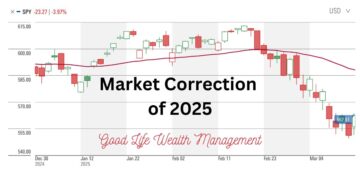Much has been studied, analyzed, and written about the “safe withdrawal rate” from a retirement portfolio, but unfortunately, there is no withdrawal rate that is guaranteed to work in all circumstances. The interest rates on bonds remains so low today that a portfolio of 60% equities and 40% bonds is almost certainly going to lag its historical return over the next decade. That’s a real danger to anyone who is basing their retirement withdrawals on past performance.
Currently the 10-year US Treasury bond is yielding about 1.9%. Put in $1 million and you’ll get only $19,000 in annual income. That’s actually a good return compared to the 25% of government bonds which are presently at negative yields globally. None of this bodes well for today’s conservative investors who may have based their 4% withdrawal rate assumption on historical bond returns of 5, 6 percent or more.
Are there any alternatives to a withdrawal strategy from a total return portfolio? One time-tested approach enjoying a resurgence in popularity is Dividend Growth stocks. These are blue-chip companies which have a long tradition of paying dividends and increasing those payouts almost every year. Instead of selling 4% of a portfolio each year, this approach is to keep ALL of your shares and only withdraw the cash dividends that are thrown off by your holdings.
The benefits of a withdrawing dividends for retirement include:
1) Yields of 3% to 5% on established companies like Boeing, Johnson and Johnson, or AT&T. It is very rare that the yield on these stocks would be higher than the 10-year Treasury. In a taxable account, qualified dividends would be taxed at a 15-20% rate versus bond interest which is taxed as ordinary income (15-39.6%).
2) While dividends are not guaranteed, dividends often increase annually. Retirees need income that can keep up with inflation, and CDs and Long-Term Bonds are only going to lock in today’s extremely low interest rates.
How common are dividend increases?
Looking at the S&P 500 Index, through March 31, 114 companies have increased their dividend so far this year, versus only 12 who have lowered or halted their dividend (primarily in the energy sector). Last year, 344 companies increased their payouts. Even in the worst year for dividends, 2009, dividend increases outnumbered decreases two to one (157 to 78).
From 2006, AT&T has increased its annual dividend from $1.33 per share to $1.92. Boeing increased dividends from $1.20 to $4.36. Johnson and Johnson, from $1.46 to $3.00 a share. Today’s yields of 3% may not sound very exciting, but if you are a true long-term investor, the potential growth of dividends is a compelling reason to own stocks versus bonds.
3) Dividends are less volatile than stock prices. A company may maintain or increase its dividend, even if the stock price were to fall by 20 or 30%. This matters to retirees, because you don’t want to be selling your shares when the market is down. With a dividend approach, if you own 1000 shares, you still own 1000 shares even after you take your dividend income.
You may be able to sleep better at night by taking income from dividends versus withdrawals from a portfolio of mutual funds. This idea isn’t new and has become so popular, in fact, that the some of the most common dividend stock categories (consumer staples, utilities, etc.) have become quite expensive. So I don’t think you can just blindly buy any old dividend stock. Those with the highest dividend yields are particularly risky, so you have to be careful in choosing your stocks.
If you are a couple of years from retirement, building a pool of dividend stocks now may help insulate your future retirement income from stock market shocks. If, on the other hand, you are planning to use a 4% withdrawal strategy, a 25% drop in your portfolio would mean a 25% drop in your future retirement income. For the dividend investor, their income depends on the number of shares they own, not their current market value.
You can reinvest dividends today, increasing your share count until you do retire. At 3%, quarterly dividends could increase 1,000 shares to 1,161 shares in five years, assuming no change in dividend yield.
I don’t want to suggest that dividend stocks are a substitute for bonds – there is no doubt that an equity portfolio will have more volatility than a diversified portfolio of stocks and bonds. A portfolio of high quality dividend stocks may yield less than 4%, meaning that someone using the 4% rule could have a higher retirement income than the dividend investor. The dividend investor, however, is someone who does not want to be eating into their share count if the market returns less than 4%.
If you are interested in building a portfolio of individual dividend stocks, I’d love to hear from you. We are contemplating creating a new Dividend Growth portfolio model for clients, but first want to get an idea of the level of interest.
Data from Standard and Poors and Yahoo! Finance. Stocks are examples only and not a recommendation or investment advice.







